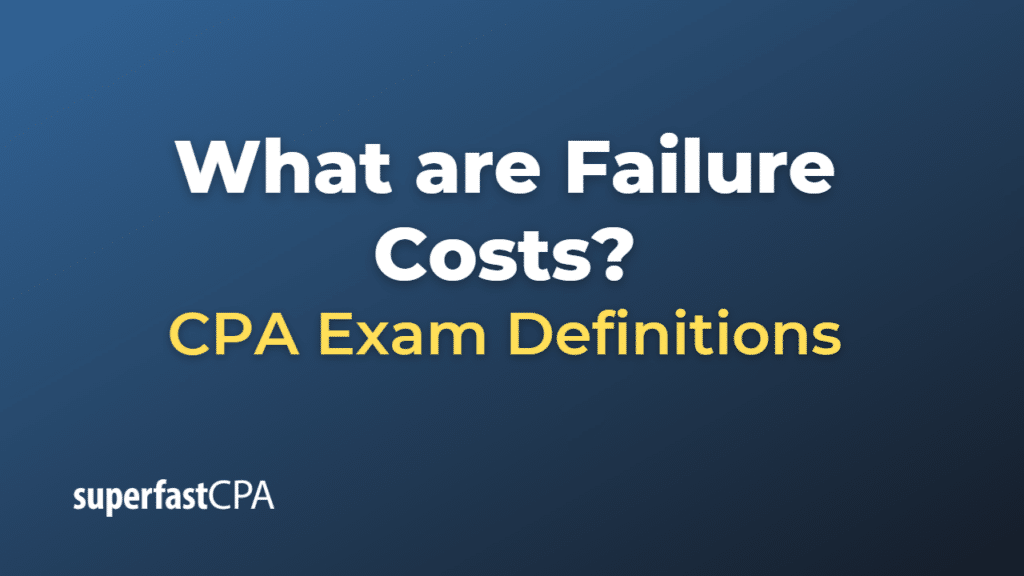Failure Costs
Failure costs, also known as costs of poor quality, are incurred when a product or service fails to meet the quality standards set by an organization or customer, and must be corrected. They are one of the components of the cost of quality, a concept that emphasizes the idea that the lack of quality can lead to a significant financial impact. Failure costs can be divided into two categories:
- Internal Failure Costs: These are costs related to defects that are discovered before the product is shipped to the customer. Examples of internal failure costs include:
- Scrap: Defective product or components that cannot be repaired or reused
- Rework: The cost of correcting the defective product
- Process failure: When the process of production is unsuccessful and needs to be started again
- Downgrade costs: When a product can’t be sold at its intended price and has to be sold for less
- External Failure Costs: These are costs related to defects that are discovered after the product has been shipped to the customer. Examples of external failure costs include:
- warranty costs: The cost of fixing a product that has been returned under warranty
- Returns: The cost of handling and replacing defective products returned by customer
- Complaints: The cost of managing customer complaints related to poor quality
- Liability costs: The cost of compensating customers for loss or damage resulting from poor quality
The goal of any organization is to minimize failure costs by investing in prevention activities and appraisal activities to ensure that the products or services meet the quality standards.
Example of Failure Costs
Let’s consider a fictional company, “ElectroGadgets Inc.,” that manufactures electronic gadgets. Here are some examples of failure costs that ElectroGadgets might encounter:
Internal Failure Costs:
- Scrap: During the manufacturing process, a batch of circuit boards is found to be defective and can’t be used. The cost of these wasted materials is an internal failure cost.
- Rework: A quality control check finds that a number of completed gadgets have faulty switches. The cost of labor and materials to replace these switches and correct the gadgets is an internal failure cost.
External Failure Costs:
- Warranty Costs: A customer returns a gadget that has stopped working within the warranty period. The cost of repairing the gadget and returning it to the customer, or providing a replacement, is an external failure cost.
- Returns: A batch of gadgets sold to a retailer is returned because they don’t work properly. The cost of managing these returns, including providing refunds or replacements to the retailer, is an external failure cost.
- Complaints: Several customers have complained about a particular issue with a gadget. The cost of managing these complaints, including staff time in customer service and any refunds or compensation provided to customers, is an external failure cost.
- Liability costs: A customer suffers an injury due to a malfunctioning gadget and sues ElectroGadgets Inc. The legal costs associated with this lawsuit, and any resulting compensation paid to the customer, would be considered an external failure cost.
In order to minimize these costs, ElectroGadgets Inc. might invest in preventative measures such as improving their quality control processes, training employees, or updating manufacturing equipment to avoid defects.













